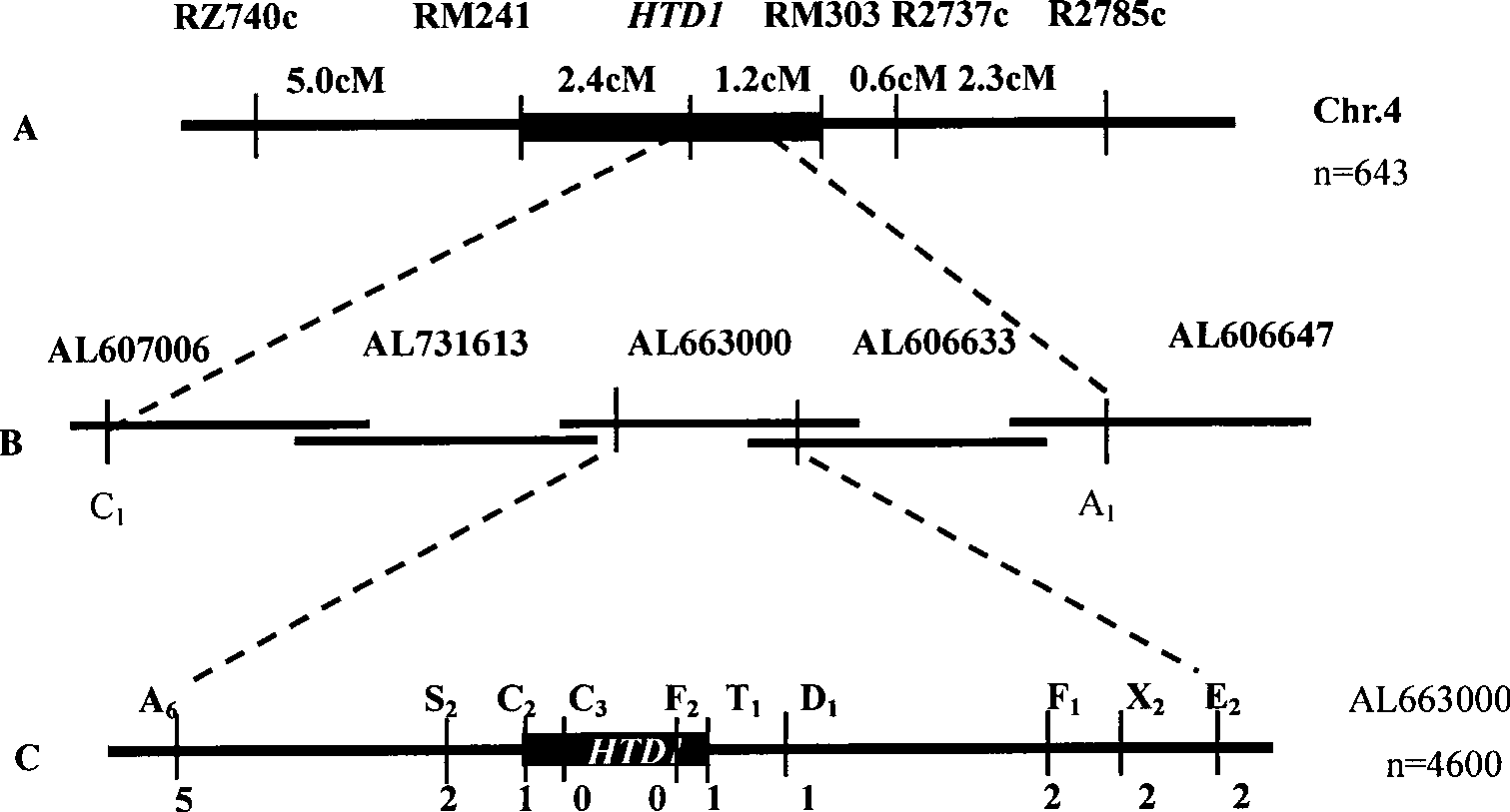Rice tillering associated protein and encoding gene and use thereof
A technology of tiller-related proteins and coding genes, which is applied in the field of rice tiller-related proteins and their coding genes and applications, can solve the problems of only increasing the number of tillers, rice multi-tiller mutants, etc., and achieve the purpose of increasing rice yield and maximizing economic output and avoid the effect of wasting nutrients
- Summary
- Abstract
- Description
- Claims
- Application Information
AI Technical Summary
Problems solved by technology
Method used
Image
Examples
Embodiment 1
[0045] Embodiment 1, the acquisition of rice tiller-related protein and its coding gene
[0046] 1. Genetic analysis of rice tiller-related gene HTD1
[0047] The multi-tiller dwarf mutant Xintai'ai (indica rice) was isolated from a cross between the double dwarf mutant Aitaiyin-2 and the high-stalk indica variety Nanjing 6 (Liang GH, P., X.B., Gu, M.H., Ji , C.Q.(1995). "The isolation and genetic identification of a semidwarf gene from an indicarice variety Aitaiyin 2." Chinese J.RICE Sci .9:189-192). After the rice plants have been headed and the height has been determined, the orthogonal and reciprocal F 1 The plant height and tiller number of generation, the results are shown in Table 1, show that the plant height of the multi-tiller dwarf mutant Xintaiai is significantly lower than the wild type variety Nanjing 6 (82.64 / 140.52), and the decline rate is 41.2%; The number of tillers in Tai'ai was significantly higher than that of the wild-type variety Nanjing 6 (99.5 / 11...
Embodiment 2
[0072] Embodiment 2, expression analysis of HTD1
[0073] In order to study the expression pattern of HTD1 in rice, RNA from different tissues such as rice leaves, stems, panicles and roots were extracted, and Northern hybridization was carried out with HTD1 cDNA (sequence 2) as a probe. The results are as follows Figure 8 As shown, it shows that HTD1 is expressed in the above tissues, but the expression in the aerial parts is stronger, and the expression in the root is weaker. In addition, in the transgenic plants obtained by transforming rice with the vector containing HTD1 and GUS fusion protein encoding gene HTD1::GUS, the results of GUS histochemical staining showed that the midrib, leaf sheath, and stem node of rice plants with HTD1::GUS gene, GUS was expressed in panicle and root tissues, and each tissue further confirmed the Northern result of HTD1 gene expression pattern; at the same time, the results of GUS histochemical staining also revealed that HTD1 gene may onl...
PUM
 Login to View More
Login to View More Abstract
Description
Claims
Application Information
 Login to View More
Login to View More - R&D
- Intellectual Property
- Life Sciences
- Materials
- Tech Scout
- Unparalleled Data Quality
- Higher Quality Content
- 60% Fewer Hallucinations
Browse by: Latest US Patents, China's latest patents, Technical Efficacy Thesaurus, Application Domain, Technology Topic, Popular Technical Reports.
© 2025 PatSnap. All rights reserved.Legal|Privacy policy|Modern Slavery Act Transparency Statement|Sitemap|About US| Contact US: help@patsnap.com



